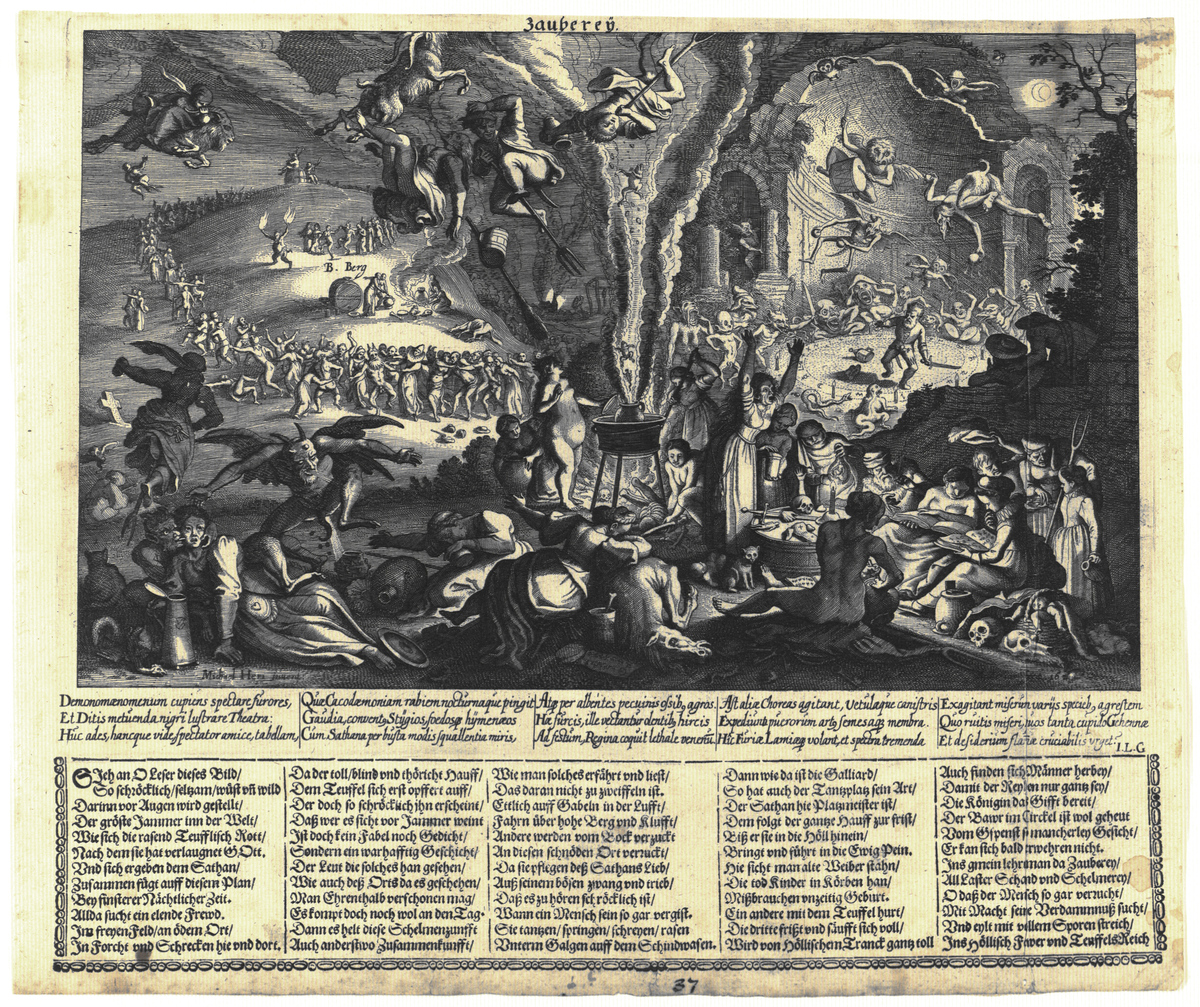Source

Source: Matthäus Merian the Elder (after Michael Herr), Zauberey, etching, 1626. Text by Johann Ludwig Gottfried. UB Erlangen-Nürnberg, http://bvbm1.bib-bvb.de/webclient/DeliveryManager?pid=2498901&custom_att_2=simple_viewer
According to a myth propagated during the era of witch persecution, witches and wizards gathered at certain places on Walpurgis Night, April 30. Arguably the most famous of these alleged meeting places was the Blocksberg (or Brocken), the highest peak in the Harz Mountains. (This mountain was later immortalized in Goethe’s Faust as the place where Dr. Faustus sold his soul to the devil.) This seventeenth-century copperplate engraving depicts the sinister events that supposedly take place on the Blocksberg on Walpurgis Night. The accompanying verse by German Baroque poet Johann Klaj warns the reader not to be tricked into believing in witchcraft.

Source: Matthäus Merian the Elder (after Michael Herr), Zauberey, etching, 1626. Text by Johann Ludwig Gottfried. UB Erlangen-Nürnberg, http://bvbm1.bib-bvb.de/webclient/DeliveryManager?pid=2498901&custom_att_2=simple_viewer
UB Erlangen-Nürnberg